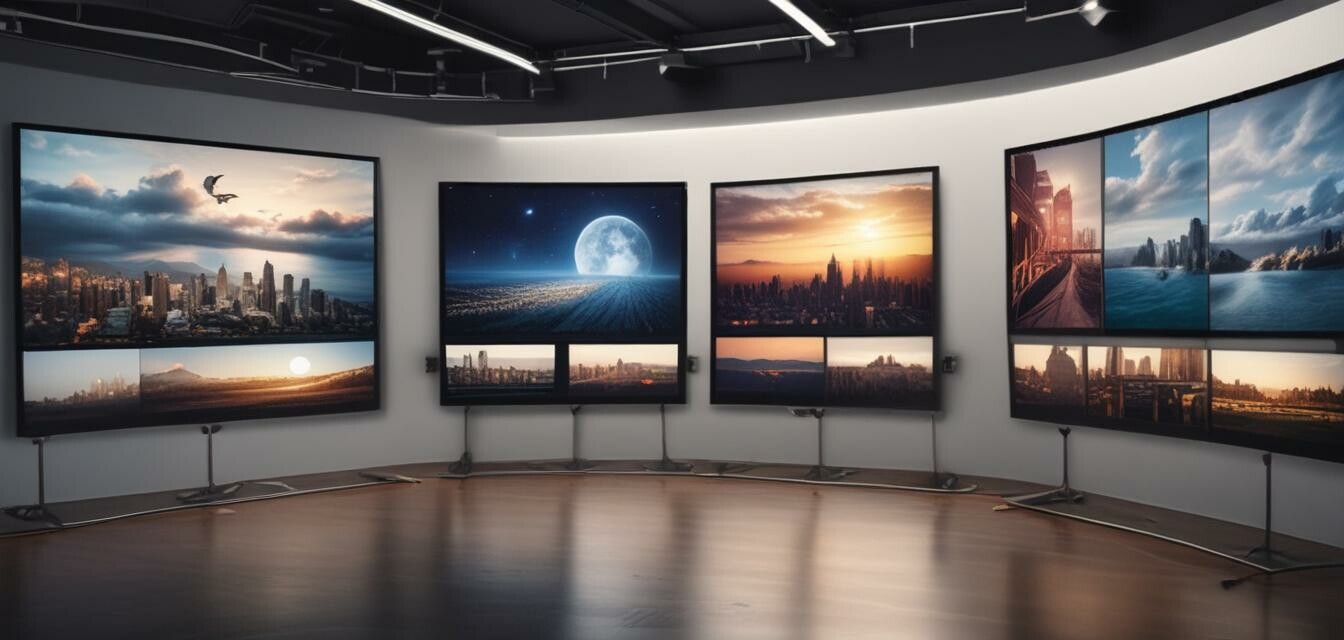
Understanding Different Types of Projector Screens
Key Takeaways
- Choosing the right projector screen depends on your viewing environment and projector type.
- Portable projector screens are ideal for outdoor and mobile use.
- Fixed-frame and electric screens provide a more professional aesthetic for home theaters.
- Consider screen material and gain for optimal projection quality.
- Ensure your screen size matches your room dimensions for the best viewing experience.
When it comes to enhancing your viewing experience, selecting the right projector screen is crucial. With various options available, understanding the different types of projector screens can help you make an informed decision tailored to your needs.
Types of Projector Screens
1. Fixed Frame Projector Screens
Fixed frame screens are designed to stay in place, providing a taut surface that enhances image quality. These screens are ideal for dedicated home theater setups.
- Advantages: Excellent image quality, no wrinkles, and a professional look.
- Disadvantages: Requires permanent installation and can be bulky.
2. Motorized Projector Screens
Motorized screens can be rolled up and down with the push of a button. They are perfect for multi-purpose rooms where you require flexibility.
- Advantages: Convenience, remote control operation, and discreet storage.
- Disadvantages: Higher cost and potential for mechanical issues.
3. Portable Projector Screens
Portable screens are lightweight and easy to transport, making them perfect for outdoor movie nights or business presentations.
- Advantages: Easy to setup and carry, suitable for varied locations.
- Disadvantages: May be less durable and offer slightly poorer image quality.
4. Tripod Projector Screens
Tripod screens are foldable and have a stand, making them perfect for travel and temporary setups.
- Advantages: Easy assembly, portable, and space-saving.
- Disadvantages: Less stable in windy conditions, can be awkward in windy locations.
5. Wall-Mounted Projector Screens
These screens are mounted flush against a wall or ceiling, offering a clean look. They can be either fixed or retractable.
- Advantages: Space-efficient and can be visually pleasing.
- Disadvantages: Requires permanent installation, may not fit in all spaces.
6. Specialty Screens
These include screens specifically designed for rear projection or unique applications such as outdoor settings where high brightness is desired.
- Advantages: Tailored for specific use cases, optimized for conditions.
- Disadvantages: Can be more expensive and harder to find.
Choosing the Right Screen for Your Needs
To choose the suitable projector screen, consider the following factors:
| Factors | Considerations |
|---|---|
| Viewing Environment | Indoor vs. outdoor settings and lighting conditions. |
| Screen Size | Room dimensions and the distance from the screen. |
| Material | Consider gain and viewing angle, which affect image quality. |
| Portability | Do you need a screen for fixed installation or easier transport? |
| Budget | Determine an ideal price range that balances quality and features. |
Featured Products
Mdbebbron 120 inch Projection Screen
A foldable, anti-crease portable screen perfect for both indoor and outdoor usage.
Learn MoreHUANYINGBJB 4K Projector Screen
A versatile double-sided screen that delivers excellent display quality for various settings.
Learn MoreInstallation Considerations
When installing your projector screen, keep the following tips in mind:
Tips for Installation
- Ensure proper height and distance according to the seating arrangement.
- Use a level to install fixed screens to avoid angled projections.
- Consider wire management to keep installations clean and organized.
Conclusion
Choosing the right projector screen can greatly enhance your viewing experience. By understanding the various types and considering factors such as your environment, budget, and intended use, you can find the best screen for your needs. For more information on projector screens, check out our Projector Screen Guide or visit our Productivity Tips for effective usage.
Pros
- Improved image quality with the right screen
- Variety of options for different needs and environments
- Enhances overall viewing experience
Cons
- Can be expensive depending on specifications
- Installation may require additional tools or skills



